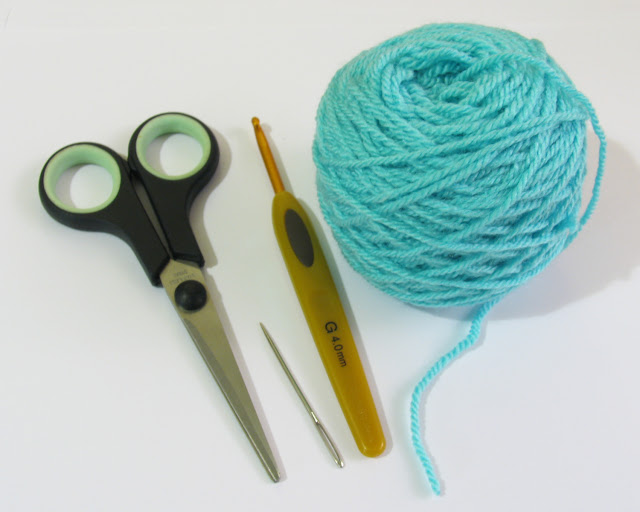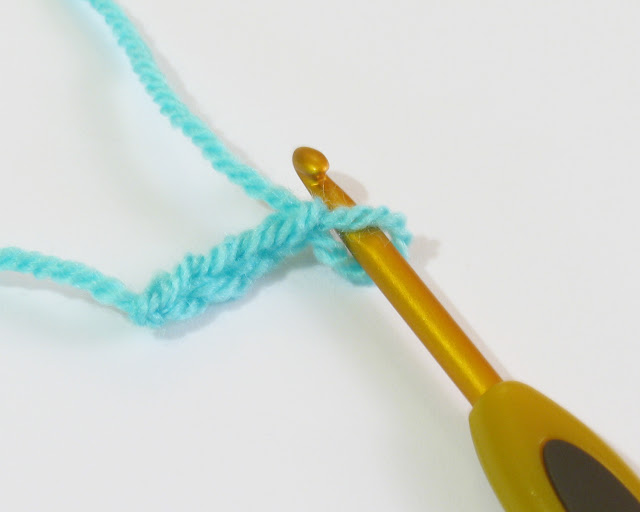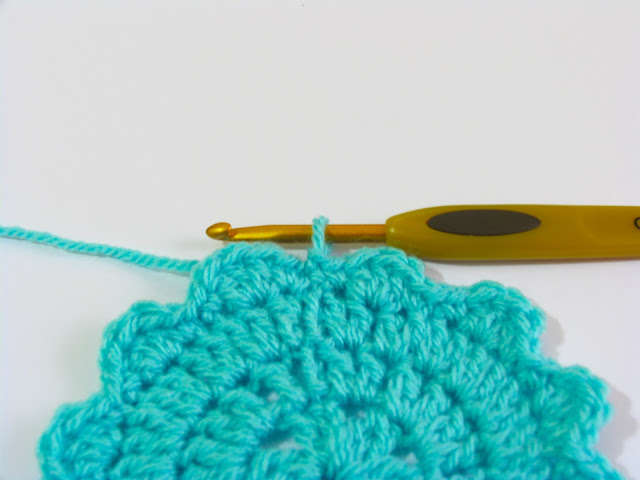
After Christmas I looked around and thought my coasters were looking a little shabby and could do with an update. Last time I had followed a pattern but it had a lot of holes in it so they didn't end up looking as solid as I would have liked for something I would be placing hot drinks onto. So I went in search of a new pattern and couldn't find one which suited me just right. In the end I improvised and this cute little scalloped edge design was the result.

I chose yarns to match my new colourful sofa which some of you may have seen on my instagram feed last autumn. Here are some of the coasters I made. It became a highly addictive pursuit which is why there are so many of them!!!
Here is the pattern for those of you who want to have a go. It would be fun for beginner hookers as a practice project too and there is something so satisfying in completing an item in a short space of time, rather than the larger projects which you need to come back to. I have shown the pattern using all one colour but you can work it with a different colour for each round if you prefer. I photographed the stages to give better detail but if you just want the basic pattern scroll down to the end.

You will need:
DK weight yarn in your chosen colours
4mm crochet hook
yarn needle
scissors
The pattern is written in US terminology as I see so many more that way and have begun to think in US stitches, so Double crochet (DC) is the same as a UK treble crochet etc.
Stitches used:
ch - Chain
dc - Double Crochet
bo - Bobble Stitch (details within pattern)
sc - Single Crochet
sl st - Slip Stitch
Round 1
Step 1 - the starting chain or ring.
Method A:
There are two ways of starting off here. The first way is to ch4, then join with a sl st into the first ch to make a ring. Lots of people do this and it works fine. If you are using this method you will need to next ch3, then dc into the ring and ch2 before moving onto your first bobble stitch which you will get to as you scroll down.
Method B:
I find it a little fiddly to join a chain so I use the following method to begin:
ch4

dc in the fourth chain from the hook (I will refer to this as the centre ring henceforth). This keeps the centre nice and small. I find it easier than joining a chain too if I can get away with it!

Then ch2.

Step 2 - the bobble stitches.
Whichever starting method you have chosen, this will be your next step. The chain and the dc you made will count as a bobble stitch but make the other five stitches to finish the round using the following instructions.
Now you need to make your first bobble stitch. Don't worry, it's really fun to do once you get the hang of it. Here's how to make a bobble stitch:

Yarn over, insert hook through centre ring. Yarn over, pull a loop back through the centre ring. You now have three loops on your hook.

Yarn over, insert hook through centre ring, yarn over, pull a loop back through centre ring. You now have 4 loops on your hook.

Yarn over and pull through 2 loops. You have three loops on your hook.

Yarn over and pull through all 3 loops, completing the bobble stitch.
I know it looks complicated but it is not so difficult. The best way to describe it is like two unfinished double crochet stitches, combined at the top. Give it a try.
Once you have mastered your first bobble stitch, ch2,

then work bo, ch2 into the centre ring 4 more times then join with a sl st into the top of the first dc (not the starting chain). At the end of this round you will have made 6 bobble stitches and 6 chain2 spaces. count at the end of each round to make sure. It looks like a little flower within a wheel.


Round 2
ch3 (counts as 1 dc),

dc into the same stitch,

2dc into the next ch-sp.


*2dc into top of next dc, 2dc into the next ch-sp*. Repeat between ** five more times then join to top of 3rd ch with a sl st. At the end of this round you should have 24dc including the beginning ch3. Count around and check.

Round 3
Ch3 (counts as 1 dc), dc into the same stitch,

2dc into each remaining stitch. Join to top of 3rd ch with a sl st. At the end of this round check to see if you have 48dc. You should!

Round 4
Ch1, sc in next stitch, 3dc in next stitch, sc in next stitch.

*sl st in next stitch, sc in next stitch, 3dc in next stitch, sc in next stitch* repeat between** then join to beginning ch1 with a sl st. It is sometimes hard to find this ch1 as it is so tiny but it should just be the next stitch along if you have worked the scallops properly. At the end of this round you should have 12 complete scallops.

That's it! One coaster made!

Now just weave in the loose ends on the wrong side with your yarn needle,

And then test it out with a well deserved cup of tea…

And if you are like me and find them addictive, I suggest that you stop making them when you have enough coasters to cover a dining table!

For those of you familiar with crochet pattern lingo who don't need the photos and details, here are the bare bones:
Round 1: ch4, dc in 4th ch from the hook, ch2, *bo, ch2*, repeat between **4 times. sl st into top of first dc. (6bo and 6ch2 spaces)
Round 2: ch3, dc into the same stitch, 2dc into the next ch-sp. *2dc into top of next dc, 2dc into the next ch-sp*.
Repeat between ** five more times then join to top of 3rd ch with a sl st. (24dc)
Round 3: ch3, dc into the same stitch, 2dc into each remaining stitch. Join to top of 3rd ch with a sl st. (48dc)
Round 4: ch1, sc in next stitch, 3dc in next stitch, sc in next stitch. (one scallop made) *sl st in next stitch, sc in next stitch, 3dc in next stitch, sc in next stitch* repeat between** then join to beginning ch1 with a sl st. (12 scallops in total)
Have fun and if you make any of your own we would love to see any photos. We are on instagram if you want to tag us in your project pics!
If you pass on or duplicate the pattern please credit us wherever you post it. This is my first time writing a pattern so if you spot any errors or have any questions please get in touch.


No comments:
Post a Comment